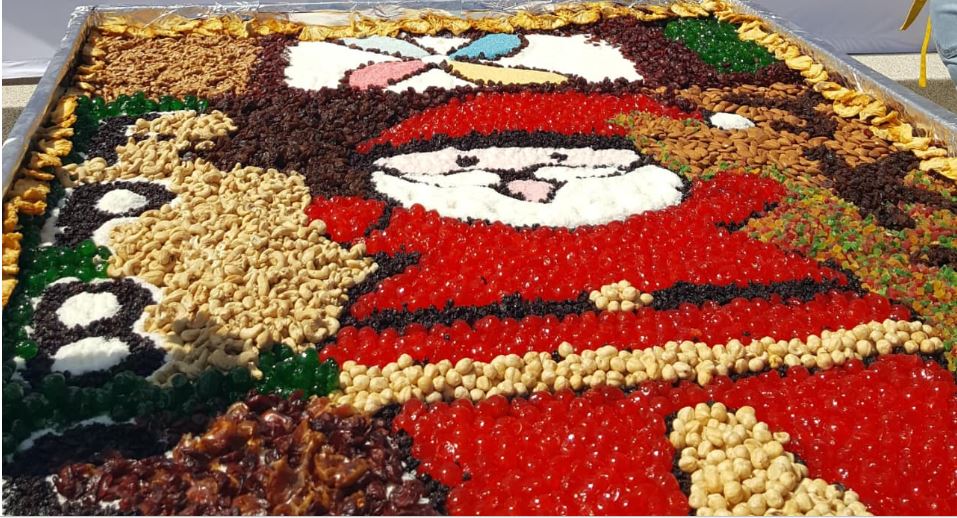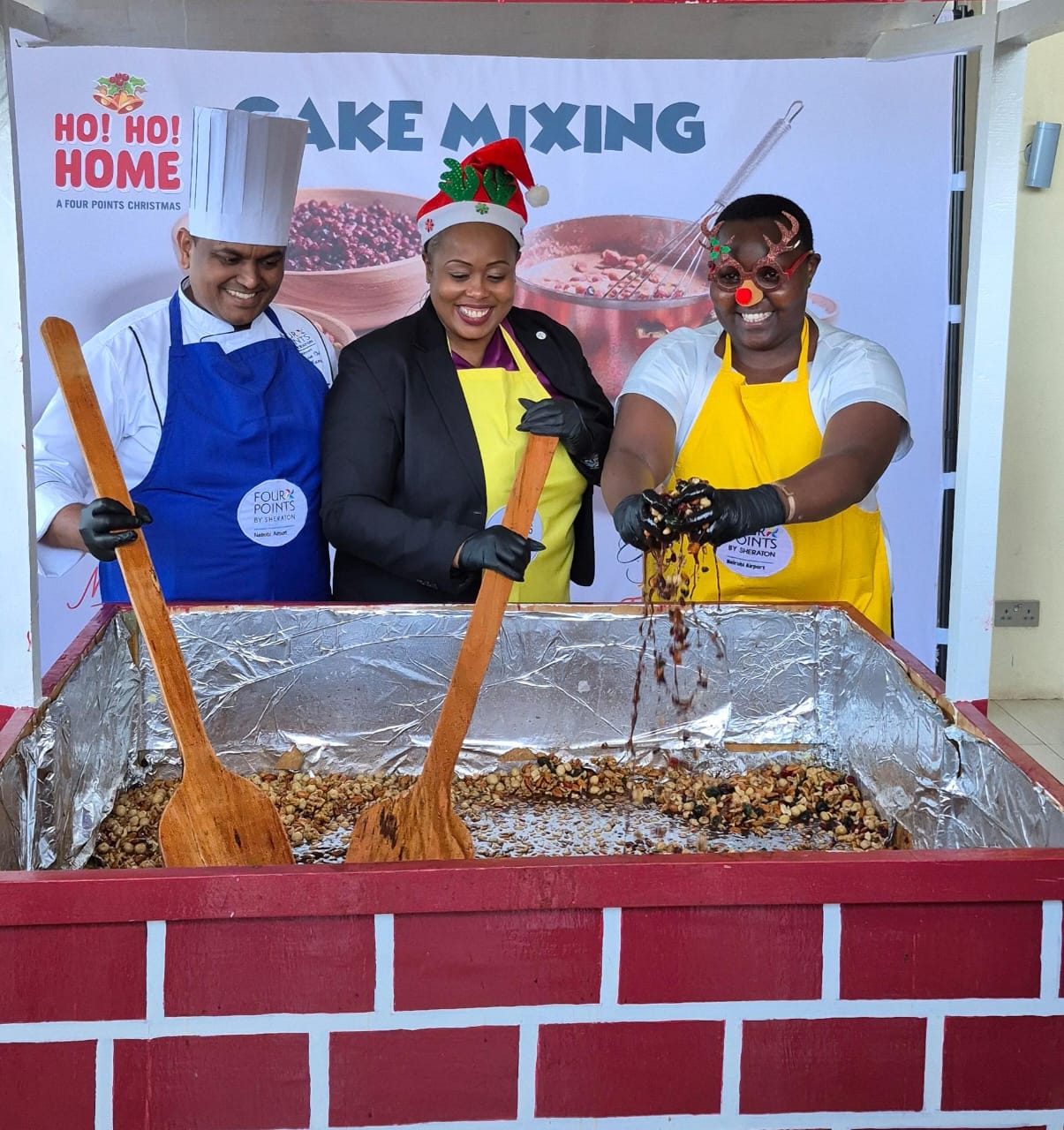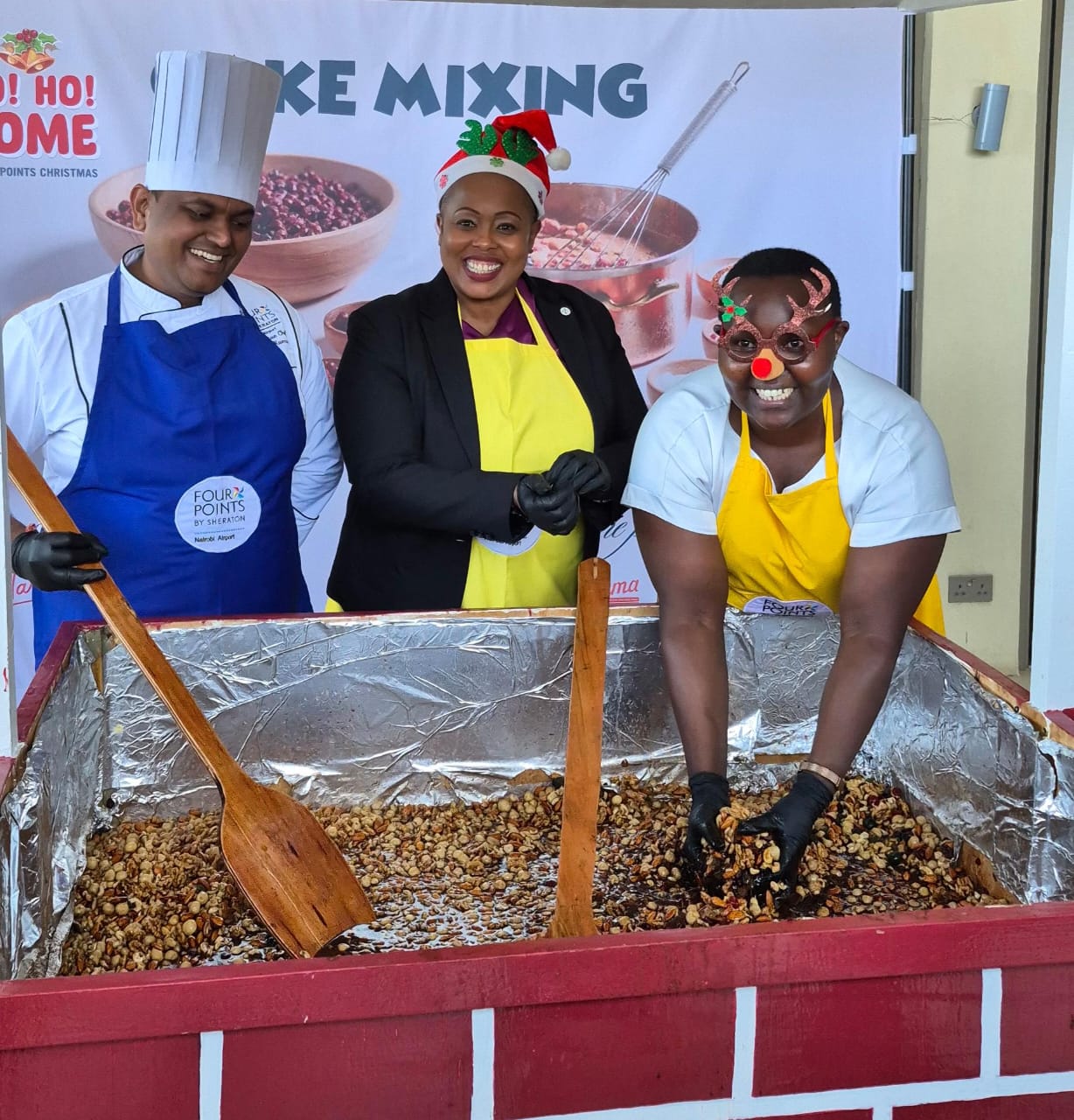
What you need to prepare banana cake
Moist, sweet cake made with mashed ripe bananas.
The tradition has roots in British colonial customs, where Christmas cakes were central to holiday celebrations.
In Summary

Audio By Vocalize

The festive season in Kenya is often marked with a variety of cultural and culinary traditions, but few are as eagerly anticipated as the annual cake mixing ceremony.
This age old practice, rooted in both British colonial and local customs, has evolved into a social and family celebration that heralds the start of Christmas preparations.
At its core, a cake mixing ceremony is a gathering where key ingredients for the Christmas cake typically flour, sugar, butter, dried fruits, nuts, and a generous splash of alcohol are combined, stirred, and blessed.
Unlike simple baking, the ceremony emphasises community, family, and a touch of ritual, making it as much about togetherness as it is about the final dessert.
During this time, the air is filled with a mix of spices and the sound of light music, creating an atmosphere of warmth and anticipation.
Attendees include families, friends, corporate groups, and even curious first timers who want to witness the tradition firsthand.
Cake mixing is not just about the cake itself but about gathering, sharing stories, and starting the festive season on a joyful note.
Participants take turns in adding ingredients into a large mixing spread, a process that often involves symbolic gestures.
Rum soaked fruits for instance, are added slowly while stirring clockwise which is believed to invite good luck and prosperity for the coming year.
Some families even incorporate a coin or a small charm into the mixture, a gesture meant to bring financial fortune to the household.
Traditionally, the cake mixture is stirred by the eldest member of the family or group, with younger participants assisting.
This passing down of roles represents continuity and respect for generations.

Hotel staff at Four Points by Sheraton JKIA stir the cake mixing ingredients/ CYNDY ALUOCH.
In modern ceremonies, professional bakers or chefs sometimes guide the process, ensuring that the cake will turn out perfectly while maintaining the ceremonial aspect.
While the ceremony may appear informal, it is highly organised and the ingredients used are carefully measured and prepared in advance.
Guests are guided on how to mix while music and light entertainment keep the mood lively.
In some cases, participants are encouraged to make a wish or say a prayer as they stir, adding a spiritual element to the occasion.
After the mixing, the cake is typically wrapped and allowed to mature for several weeks, absorbing the flavours of the fruits, spices, and alcohol.
The result is a rich, moist cake that becomes the centre-piece of Christmas celebrations in homes and hotels across Kenya and beyond.
Families often save slices for guests, a gesture that reinforces community bonds.
The tradition has roots in British colonial customs, where Christmas cakes were central to holiday celebrations.
Historically, in Victorian Britain, families would gather weeks before Christmas to prepare large fruitcakes that could last through the holiday season.
When British settlers and missionaries came to Africa, they brought this custom along and over time it was adapted locally, becoming a communal and festive event.
Over time, Kenyans have adapted the practice, incorporating local ingredients and personal rituals.
Today, it is seen as both a culinary and cultural event, attracting a diverse audience eager to participate.
"Every ingredient tells a story. The fruits, nuts, even the alcohol all come together to create something beautiful. The cake is a symbol of patience, care, and celebration," a chef overseeing the ceremony in one of the hotels said.

Hotel staff at Four Points by Sheraton JKIA stir the cake mixing ingredients/ CYNDY ALUOCH.
For many participants, the ceremony is also an educational experience.
Children and younger guests learn about the importance of measurement, timing, and the culinary science behind baking.
They also experience the social aspect of the tradition, understanding how shared activities strengthen family and community ties.
The economic aspect of cake mixing events has grown in recent years with hotels, resorts, and culinary schools hosting public cake mixing ceremonies while offering tickets to guests who want to immerse themselves in the tradition.
These events not only celebrate the season but also provide a platform for local chefs, bakers, and suppliers to showcase their products and skills.
Guests mingle freely, tasting samples of ingredients, exchanging tips, and sharing festive stories.
Beyond the immediate sensory pleasures of smell and taste, cake mixing ceremonies offer a deeper connection to tradition and memory.
For many Kenyans, participating in such an event evokes childhood recollections, family gatherings, and the anticipation of the holiday season.
In a fast paced world, these moments provide a pause a chance to reflect, bond, and celebrate life’s simple joys.
By the end of the day, the large bowl of mixed ingredients is carefully sealed, ready to rest for weeks before baking.
For attendees, the ceremony represents the start of the festive countdown, a symbolic gesture that Christmas has officially begun.
As cake mixing ceremonies continue to gain popularity in urban centres like Nairobi, they serve as a reminder that holiday traditions can evolve while retaining their essence.
They blend culture, community, and cuisine into one meaningful event a celebration that begins long before the first slice is ever served.
In essence, a cake mixing ceremony is not just about baking a cake but also a festive ritual, social gathering, and a cultural tradition.
It celebrates family, community, and the joy of sharing, ensuring that the Christmas season begins with warmth, laughter, and togetherness.

Moist, sweet cake made with mashed ripe bananas.